|
| *****SWAAG_ID***** | 888 |
| Date Entered | 09/08/2015 |
| Updated on | 09/08/2015 |
| Recorded by | Tim Laurie |
| Category | Flower / Plant Record |
| Record Type | Botanical HER |
| SWAAG Site Name | |
| Site Type | |
| Site Name | |
| Site Description | |
| Site Access | Public Footpath |
| Location | Preston Scar |
| Civil Parish | Preston Under Scar |
| Brit. National Grid | |
| Altitude | |
| Geology | Sheer south facing cliff formed from the Main Limestone. The Main Limestone to the rear of the cliff has been quarried away. |
| Record Name | Guelder Rose, Marjoram, Weld and other flowering plants seen on Redmire Scar. |
| Record Description | This is the first of several records which will show selected trees, shrubs and flowers on and below the named limestone scars which form the top edge of Wensleydale and Swaledale. |
| Dimensions | See photos |
| Geographical area | |
| Species | |
| Scientific Name | |
| Common / Notable Species | Thanks to Wikipedia for the following: Weld,Reseda luteola. See photo image Nos. 6400,6401 below, Reseda luteola is a plant species in the genus Reseda. Common names include dyer's rocket, dyer's weed, weld, woold, and yellow weed.[1] A native of Eurasia, the plant can be found in North America as an introduced species and common weed.
While other resedas were used for the purpose, this species was the most widely used source of the natural dye known as weld. The plant is rich in luteolin, a flavonoid which produces a bright yellow dye.[2] The yellow could be mixed with the blue from woad (Isatis tinctoria) to produce greens such as Lincoln green.[2] The dye was in use by the first millennium BC, and perhaps earlier than either woad or madder. Use of this dye came to an end at the beginning of the twentieth century, when cheaper synthetic yellow dyes came into use.[3] France exported large quantities of weld.[1]
It prefers waste places. Good weld for dye must have flowers of a yellow or greenish color, and abound in leaves; that which is small, thin-stemmed, and yellow is better than that which is large, thick-stemmed, and green; that which grows on dry, sandy soils is better than that produced on rich and moist soils. For the greatest production of coloring matter, the plant should be cut before the fruits show much development, otherwise the pigment diminishes. Dye from weld serves equally for linen, wool, and silk, dyeing with proper management all shades of yellow, and producing a bright and beautiful color.[1]
References[edit]
Wikimedia Commons has media related to Reseda luteola.
1.^ Jump up to: a b c Wikisource-logo.svg "Weld
|
| Tree and / or Stem Girth | |
| Tree: Position / Form / Status | |
| Tree Site ID | 0 |
| Associated Site SWAAG ID | 0 |
| Additional Notes | Further photographs will be added following further visits. The Guelder Rose, the foliage and berries of Viburnum opulus are best seen in autumn. The Rock Rose carpet is best seen in May and June. The rather different flowers of Redmire Scar will be recorded separately.
Preston Scar is the eastern section of a long continuous Scar with Redmire Scar the western section.
Sadly the Main Limestone, a Stategic National Resource, at the rear of the whole length of both of these Scars has been quarried away, leaving just a few feet of living rock more or less undisturbed. We shall, I suppose, need to be grateful that the view from below of the fine northern edge of Wensleydale has not been destroyed. |
| Image 1 ID | 6392 Click image to enlarge |
| Image 1 Description | Guelder Rose (Viburnum opulus)with Blackthorn at the base of the cliff. Preston Spring. |  |
| Image 2 ID | 6391 Click image to enlarge |
| Image 2 Description | Guelder Rose | 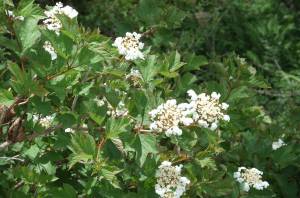 |
| Image 3 ID | 6393 Click image to enlarge |
| Image 3 Description | Guelder Rose | 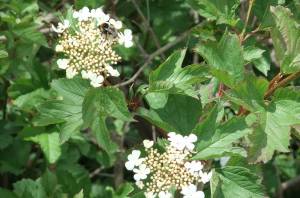 |
| Image 4 ID | 6394 Click image to enlarge |
| Image 4 Description | Valerian (V. officinalis) on scree below the Scar. |  |
| Image 5 ID | 6395 Click image to enlarge |
| Image 5 Description | Valerian (V. officinalis) on scree below the Scar. | 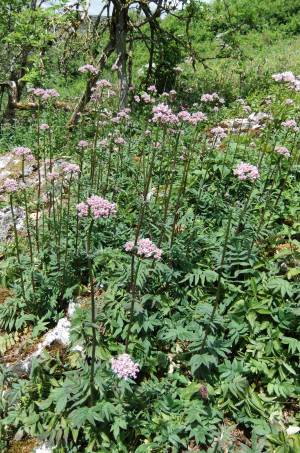 |
| Image 6 ID | 6396 Click image to enlarge |
| Image 6 Description | Marjoram, in fine form above the Scar on the edge of the quarry. This would cost you a lot in a pot! | 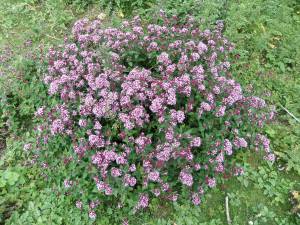 |
| Image 7 ID | 6397 Click image to enlarge |
| Image 7 Description | Marjoram, detail. | 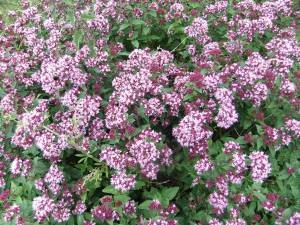 |
| Image 8 ID | 6399 Click image to enlarge |
| Image 8 Description | Musk mallow | 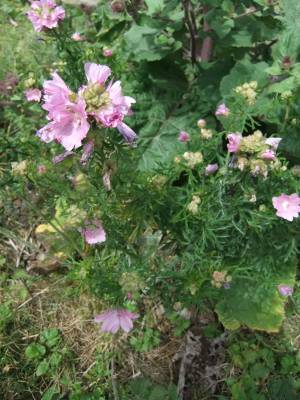 |
| Image 9 ID | 6400 Click image to enlarge |
| Image 9 Description | Weld, see above for extract from Wikepedia for the valuable properties of this plant | 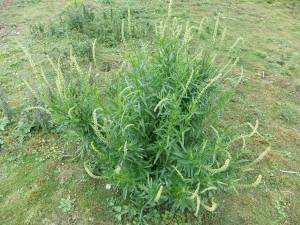 |
| Image 10 ID | 6401 Click image to enlarge |
| Image 10 Description | Weld a colonising plant on waste ground at the edge of the quarry |  |
| Image 11 ID | 6411 |
| Image 11 Description | Wild strawberry | 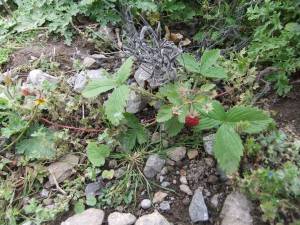 |
| Image 12 ID | 6412 |
| Image 12 Description | Elder, a shrub frequently seen on the exposed top edge of limestone scars. Mats of rock rose, long since finished flowering, on the edge of the scar. |  |
| Image 13 ID | 6414 |
| Image 13 Description | English stonecrop, Sedum anglicum on the edge of the Scar. | 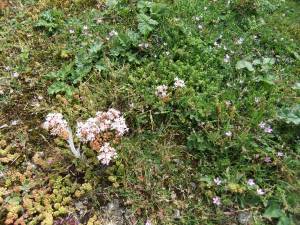 |
| Image 14 ID | 6415 |
| Image 14 Description | Biting stonecrop, Sedum acre, on the edge of the Scar. | 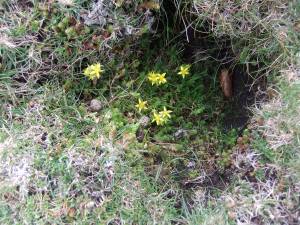 |













